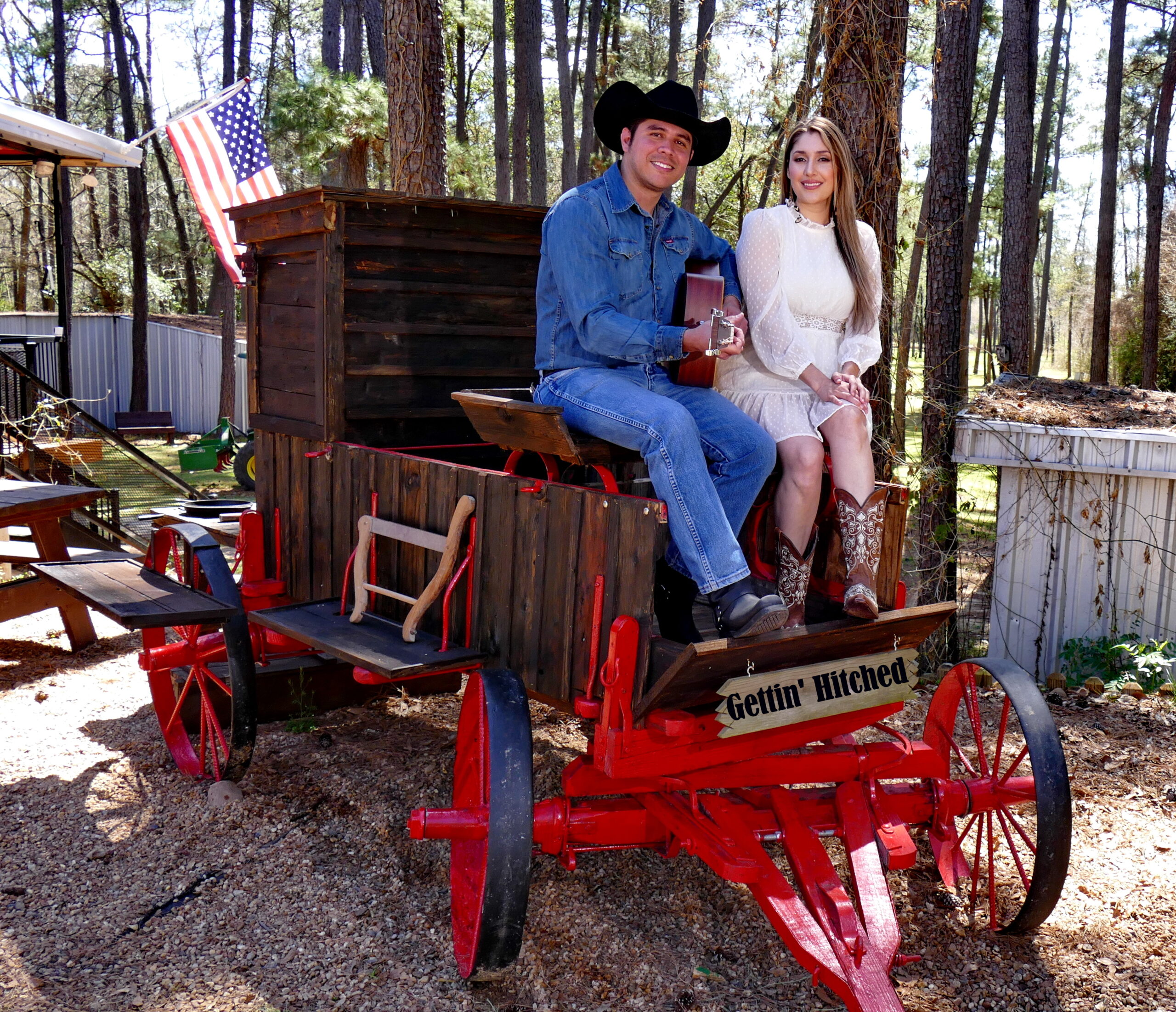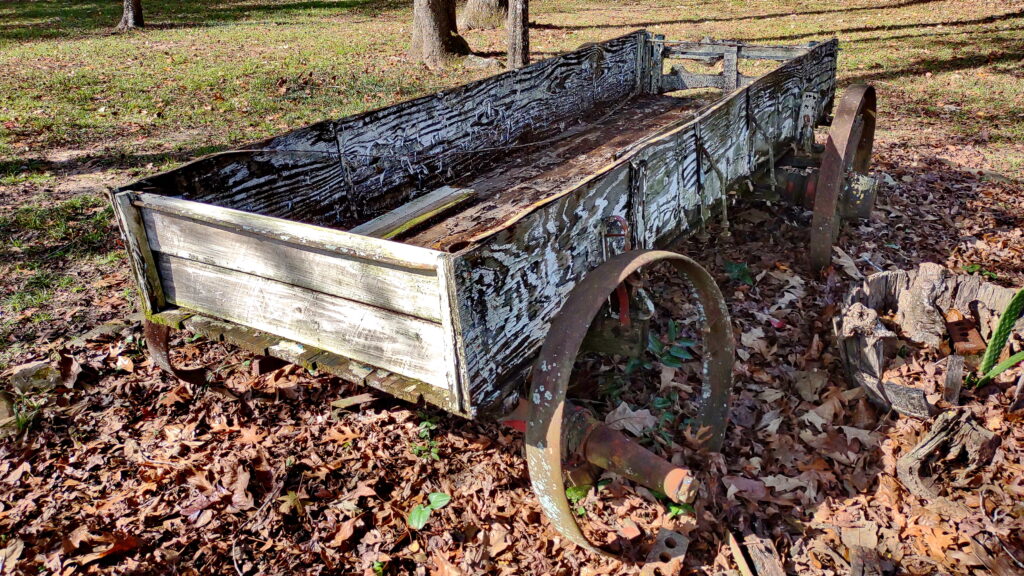From Scrap to Splendor: Step-by-Step 1880 Chuck Wagon Restoration
In a world where Craigslist stories often end in disaster, this one stands out as a heartwarming exception. What began as a simple furniture sale blossomed into an unexpected restoration project, breathing new life into a piece of American history.
In addition to taking you through the step-by-step process of building an 1880 chuck wagon, I will give you some very interesting tidbits about just how important this horse drawn vehicle was to the growth of our country.
A few years ago, I had a large conference room table I no longer needed and listed it for sale on Craigslist. Almost immediately, I got a call from a guy who lived just down the road from me. I gave him my address and to my surprise he shows up to buy this oversized table in a Karmann Ghia (sports car). He says he wants the table, and how much would I charge to bring it to his house. I say “$10”, and he gives me his address. We loaded up the table in my truck and I headed over to his house.
When I got there, he was standing in his driveway with two cold beers. I like this guy. He shows me his shop where he restores old sports cars (he will be using the table when he rebuilds some of the smaller engine parts) and we get to talking. He has a large piece of property, and buried under the fall leaves in his front yard are some wagon wheels and what looks like an old wagon.
This is my second body of copy
I ask him about it, and he said it was here when he bought the place, and believes it is a 1920’s sheep wagon mainly used to move hay and other things around the farm. He has no interest in restoring it and just wants it gone. I told him I would take it for the $10 he owes me, and we call it square.
The next day I come back and literally pick up the pieces, taking photos of everything before putting them in my truck. The wagon is beyond fragile, so there is no way to get it back in one piece. Here is what it looked like in my truck
I took extra care in removing each part of the wagon documenting each step with reference photos. When I got back to my shop I tried my best to assemble the parts in the order I found them in.
The front axle was a real challenge, since the wood in the Skeins (the steel hub that holds the week onto the axle) required that we use an acetylene torch to burn it out. This delicate operation required careful attention to preserve the original metal components.
Years of exposure to the elements had caused significant rust damage, forcing us to heat and separate seized metal components with a sledgehammer. This painstaking process required both patience and precision to avoid damaging the historical pieces.
After photographing each metal and wood component, we undertook a thorough restoration process. Using a hand grinder, every piece was meticulously cleaned then protected with a zinc primer coating to prevent future deterioration.
One of our biggest hurdles was addressing the wagon wheels. Traditional 1800s wheelwright tools and techniques were beyond our reach, and purchasing authentic replacement wheels would have cost several hundred dollars each. We developed an innovative solution: combining the original steel rims with custom-fabricated rebar spokes to create functional, period-appropriate wheels.
It’s important to note that our restoration had a specific purpose in mind. Rather than creating a fully functional chuck wagon, we were building a stationary prop for the Epic Creative Co-op’s photography studio. While the wheels needed to rotate for occasional repositioning, they weren’t designed for regular travel. Even with these modified requirements, the axle reconstruction proved challenging enough to require three attempts before we actually got the wheels to work.
With limited original wood remaining from the front axle to use as a reference, we relied heavily on historical drawings and documentation to recreate the proper dimensions and angles.
The frame assembly proved surprisingly successful, with the front and back sections aligning better than we expected. After applying multiple protective paint coats, we conducted our first mobility test outdoors. While the wagon rolled, it was immediately clear that this was to be a display piece rather than a rideable vehicle.
With the base built, it was time to turn our attention to the side walls of the wagon
Then onto the Chuck Box, which is the heart of the Chuck wagon. Our commitment to historical authenticity extended to our choice of materials. Nearly all the wood used in construction came from reclaimed fence pickets and treated pine rails. Similarly, we sourced hardware from old fence sections, salvaging hinges, gate handles, and lag bolts that would otherwise have been discarded. Only a single 2″ x 12″ board needed to be purchased new.
The chuck box was designed with historical accuracy in mind, featuring a fold-down door that doubles as a working kitchen table. We enhanced the wagon’s authenticity by carefully sourcing period-appropriate tools, equipment, and utensils from flea markets and antique shops. Generous friends contributed additional authentic items including water barrels, lassos, and a horse saddle.
When it came time to stain the wagon, we did it the way it was done over 100 years ago. We found a stain recipe comprising vinegar, coffee grounds and steel wool. Mix them all in a clear jar and let the mixture sit. It will start to turn light brown after one day, and by day three you have a walnut-colored stain.
The entire project took just over three months to build, and we were really pleased with the results. For the past two years, photographers, videographers, artists and families have enjoyed our chuck wagon replica for everything from Christmas Photos to Western Film productions.
This project would not have been possible without the reference videos made by Dave Engel, owner and wheelwright of Engel’s Coach Shop from Joliet Montana. Mr. Engel has been in the horse-drawn vehicle trade for over 40 years, starting the business in 1982. Thank you for taking the time to make the videos we watched repeatedly on this build. They are worth watching even if you are not going to rebuild a wagon.
For anyone interested in knowing more about chuck wagons, I have included some reference information below:
History of the Chuck Wagon
Rancher Charles Goodnight needed a way to hire the best hands he could find to drive cattle from Texas to Kansas, and he realized that serving cowboys great food was the way to do it. So, in 1866, Goodnight converted some civil war supply wagons into mobile kitchens specifically designed for use on cattle drives. The term “chuck” is slang for food, originating from 17th century England. A typical chuck wagon could feed 10-20 cowboys three meals a day
The chuck wagon cook, affectionately known as “Cookie,” ranked second only to the trail boss in importance. Beyond preparing meals, they often served as the drive’s dentist, barber, and banker. These mobile kitchens played a crucial role in America’s post-Civil War economic expansion, supporting the cowboys who drove millions of cattle from Texas to northern markets.
Cowboys were essential to America’s post-Civil War economic boom by driving the massive cattle industry, moving millions of cattle from Texas to northern markets and developing specialized techniques for livestock management. Beyond their economic impact, cowboys created a unique multicultural American subculture that represented ideals of independence and self-reliance.

























































